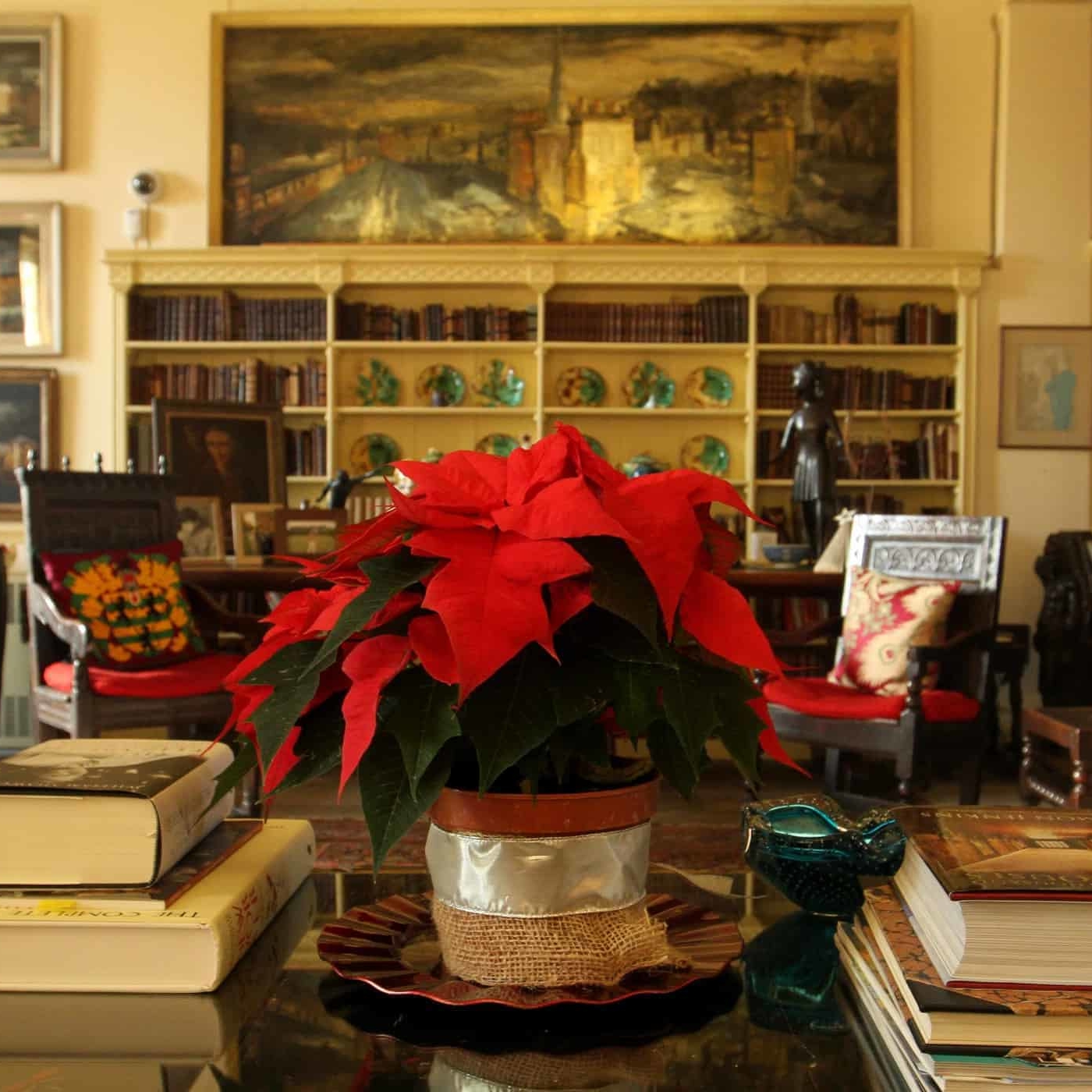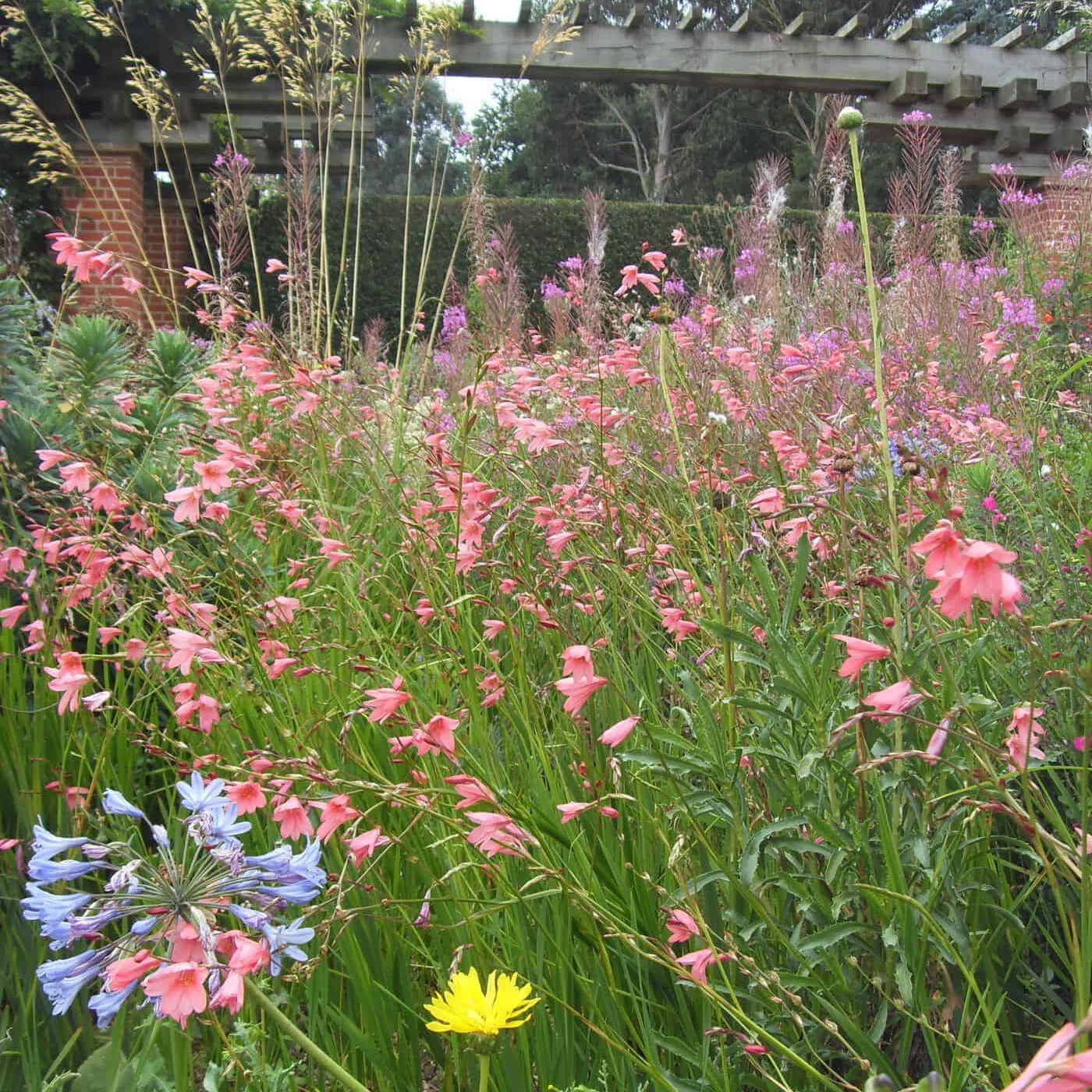The earth beneath our feet can differ from one place to the next, and planting for soil type in your garden is essential. It’s not easy changing this aspect, so it’s important to understand how to work with it.
Soil types
Soil type can be a complex quality. The composition of your soil will vary subtly, depending on exactly which part of the garden you took it from. It may differ from your neighbour’s slightly. The percentage of clay, silt or sand it contains alters its overall make-up. You can find out more in-depth information on soil type here, at the RHS website. This link also explains ways to work out your soil type, as does this link.
We’ll focus here on five main soil types for the sake of simplicity: clay, silt, sand, loam and chalk.
Clay soil
Clay soil is heavy, nutrient-rich, and extreme (it’s a waterlogged mudbath in winter but bakes solid in summer). It is slow to warm up. Working with it in wet weather is ill-advised. Its small particles (less than 0.002mm in size) increase surface area, forming layers and clinging to one another.
Here’s a list of some of the plants which will thrive in clay soil:
- Acer palmatum
- Amelanchier lamarckii
- Anemone x hybrida
- Astrantia
- Betula (beech trees)
- Geranium (not to be confused with Pelargonium!)
- Helleborus
- Hydrangea
- Hylotelephium spectabile
- Persicaria affinis
- Rosa
- Viburnum
- Vinca major or V. minor
A longer list can be found on this RHS page.
Silty soil
Silty soils can be described as fertile, moisture-retentive and easily compacted. Their fertility comes from their origin as lakes, riverbeds or floodplains.
A vast range of plants will thrive in silty soil. Lists of plants suited to clay soils will often furnish a silt garden too.
Sandy soil
Light, easily eroded and low in nutrients, sandy soils can be as tricky to develop as clay. On a positive note, they warm up quickly, although can often be acidic. Check your pH if unsure, and avoid lime-loving plants if the pH is low.
This RHS page gives a more extensive list of plants for sandy soil, but here are a few to get you going:
- Catalpa
- Cercidiphyllum japonicum
- Crocosmia
- Echinops
- Elaeagnus
- Ilex
- Lavandula
- Miscanthus sinensis
- Philadelphus
- Physocarpus opulifolius
- Prunus
- Sambucus
- Taxus baccata
- Verbena
- Wisteria
Loam
Loam is a combination of all three previous soil types, without any of their extremes. It’d be wrong to think of loam as an “ideal” condition for gardening however. The truth is that each plant has its own perfect growing condition, depending where it grows as a native.
Chalk soil
Chalk soil is a law unto itself. Often less fertile, it may be light or heavy, but is always alkaline. It will contain either lime or calcium carbonate. It isn’t possible to change its pH, yet don’t panic. A myriad of plants will happily grow in soils with a higher pH, such as the following:
- Acanthus mollis or A. spinosus
- Astilbe
- Buxus sempervirens (box)
- Carpinus betulus
- Clematis
- Coryllus avellana
- Echinacea
- Hebe
- Hemerocallis
- Parthenocissus tricuspidata or P. quinquefolia
- Quercus robur (oak)
- Rudbeckia
- Sarcococca confusa
- Thalictrum delavayi
- Vitis
You’ll discover more chalk-loving plants on this RHS page.
Improving your soil conditions
Trying to alter your soil type indefinitely is impossible. The best you can do is excavate a deep layer of the ground and refill with a different soil. This is expensive to achieve, and eventually your soil will return to its original state thanks to the bedrock beneath and surrounding sites.
Nonetheless, there are ways you can combat the worst qualities of clay, silt and sand. The key ingredient to add is organic matter: compost, bark chippings, well-rotted manure. Either dig this into the soil, or lay a 10-15cm surface mulch which organisms will work in for you. The organic matter opens clay soil up. More air pockets are created, allowing roots to penetrate more efficiently. Plants will obtain water and nutrients more easily. On the other hand, organic matter binds lighter silt and sandy soils together. This reduces erosion and compaction, plus increases retention of nutrients in sandy soil.
Unfortunately, chalky soils really can’t be changed. They will always return quickly to an alkaline pH. As shown above, working with your soil type and exploiting the wide range of plants suited to each is vital. If you long for acid-loving/chalk-hating plants, your one option is container planting. Don’t let this put you off however: it’s an opportunity to inject some style and creativity into your garden.
Kevin Gelder
Kevin joined Bestall & Co in late 2017 and brought a range of skills with him from a varied background. He gained a degree in French and Italian from Lancaster University in 2009 before successfully completing a PGCE at the University of Sheffield in 2011. He built on his communication skills through secondary language teaching, before working in healthcare administration.
Ultimately though it was his passion for plants and gardening which brought him to Bestall & Co as a member of the planting team, and although he's now moved back to an office based role, the articles he wrote whilst he was still with us live on.



